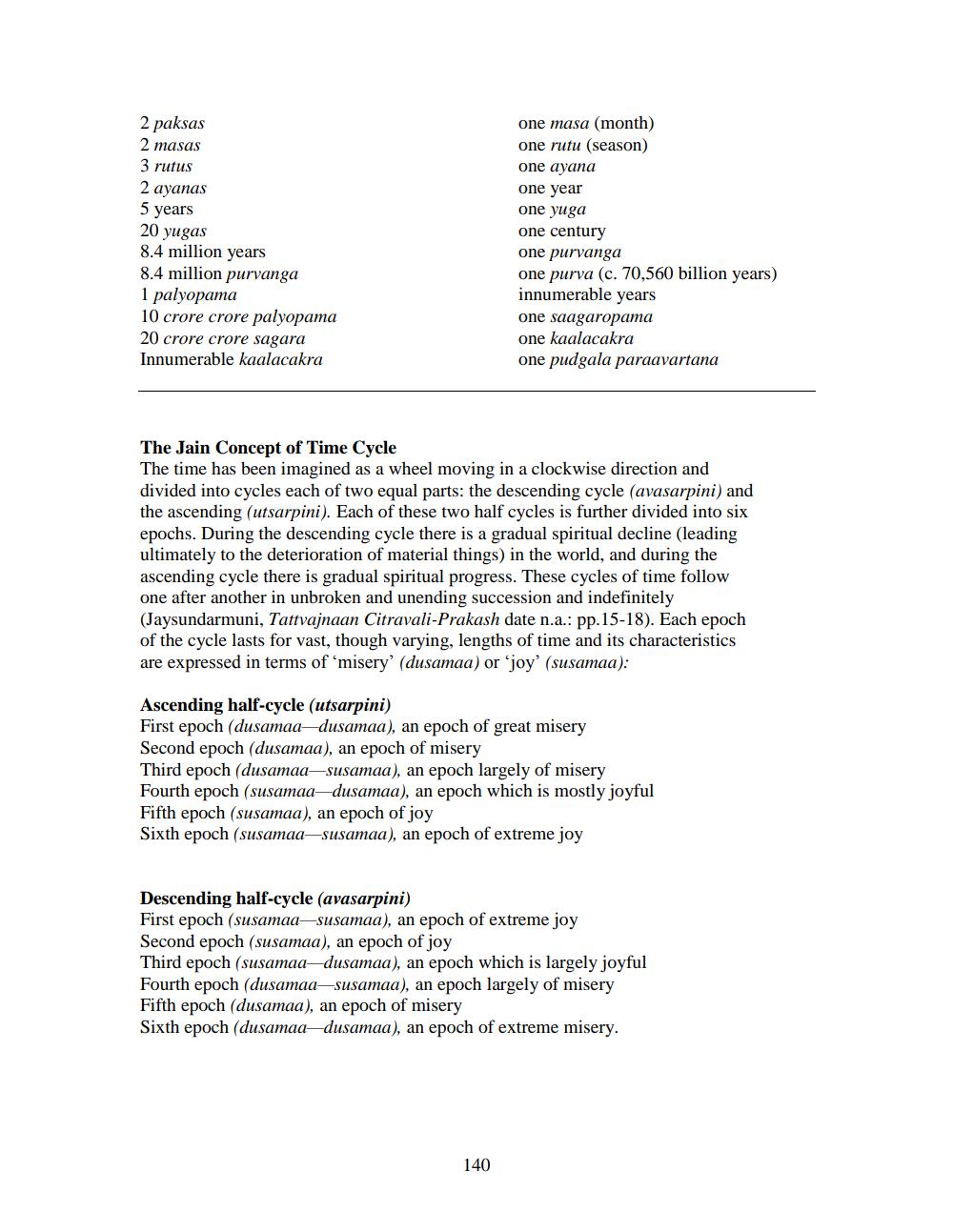________________
2 paksas
2 masas
3 rutus
2 ayanas
5 years
20 yugas
8.4 million years
8.4 million purvanga
1 palyopama
10 crore crore palyopama
20 crore crore sagara
Innumerable kaalacakra
one masa (month) one rutu (season) one ayana
one year
one yuga
one century
one purvanga
one purva (c. 70,560 billion years) innumerable years
one saagaropama
one kaalacakra
one pudgala paraavartana
The Jain Concept of Time Cycle
The time has been imagined as a wheel moving in a clockwise direction and divided into cycles each of two equal parts: the descending cycle (avasarpini) and the ascending (utsarpini). Each of these two half cycles is further divided into six epochs. During the descending cycle there is a gradual spiritual decline (leading ultimately to the deterioration of material things) in the world, and during the ascending cycle there is gradual spiritual progress. These cycles of time follow one after another in unbroken and unending succession and indefinitely (Jaysundarmuni, Tattvajnaan Citravali-Prakash date n.a.: pp.15-18). Each epoch of the cycle lasts for vast, though varying, lengths of time and its characteristics are expressed in terms of 'misery' (dusamaa) or "joy" (susamaa):
Ascending half-cycle (utsarpini)
First epoch (dusamaa dusamaa), an epoch of great misery
Second epoch (dusamaa), an epoch of misery
Third epoch (dusamaa susamaa), an epoch largely of misery
Fourth epoch (susamaa dusamaa), an epoch which is mostly joyful
Fifth epoch (susamaa), an epoch of joy
Sixth epoch (susamaa-susamaa), an epoch of extreme joy
140
Descending half-cycle (avasarpini)
First epoch (susamaa-susamaa), an epoch of extreme joy
Second epoch (susamaa), an epoch of joy
Third epoch (susamaa dusamaa), an epoch which is largely joyful Fourth epoch (dusamaa-susamaa), an epoch largely of misery Fifth epoch (dusamaa), an epoch of misery
Sixth epoch (dusamaa-dusamaa), an epoch of extreme misery.




